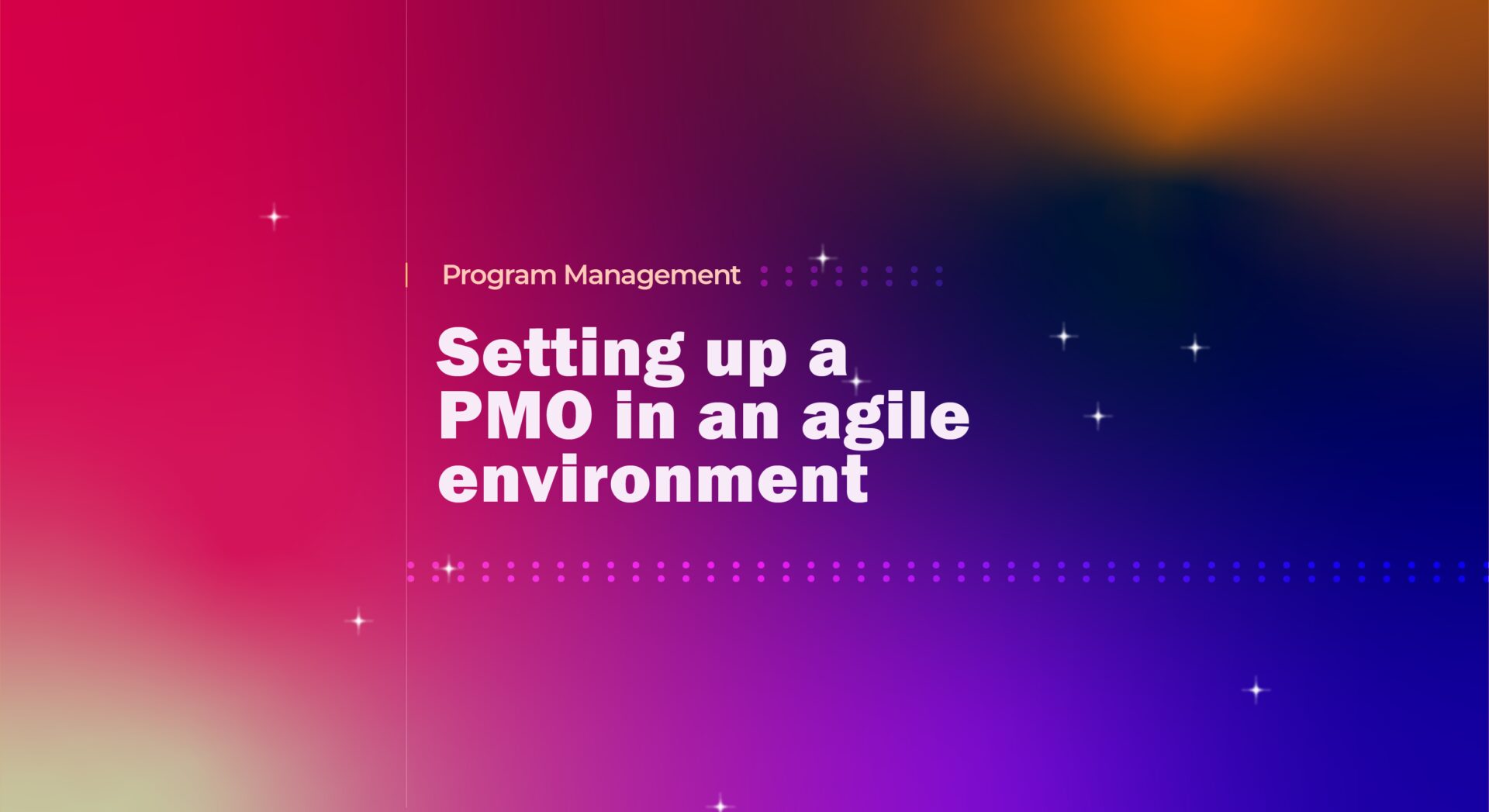
Setting up a Project Management Office in an Agile Environment
|
Tune in and get Inspired 🎧
Getting your Trinity Audio player ready...
|
A project management office (PMO) is typically a department within a business or enterprise that defines and maintains policies, procedures and process standards for project management across the organization. The PMO strives to standardize and introduce efficiencies in project execution, Control the execution of projects, and facilitate sharing of resources, tools, and techniques.
An agile PMO will support and mediate between the delivery teams and executive stakeholders. “The primary focus of an Agile PMO is to improve communication, collaboration & integration between agile delivery teams and other groups within the same organization with a vested interest in the agile transformation journey.” But how do you set up such a PMO? Let’s take a closer look.
1) How to structure the agile PMO?
The three primary PMO structures are supportive, controlling, and directive.
Supportive:
The supportive PMO structure provides guidance and support to agile delivery teams but does not dictate how teams should work or what they should deliver. This type of PMO is ideal for organizations starting their agile journey and needing help getting started.
Controlling:
The controlling PMO structure manages and oversees agile delivery teams, ensuring that projects are delivered on time and within budget. This type of PMO is ideal for organizations that have already implemented agile and want to ensure it is used effectively.
Directive:
The directive PMO structure dictates how agile delivery teams should work and what they should deliver. This type of PMO is ideal for organizations that have already implemented agile and want to ensure it is used effectively.
2) What are the roles & responsibilities of an agile PMO?
An agile PMO has three primary roles: enabling delivery, playing a servant leadership role, and promoting continuous improvement & learning. Typical responsibilities include but are not limited to: creating roadmaps, maintaining metrics & dashboards, conducting retrospectives & lessons learned sessions, and resource management & allocations.
What is an agile PMO, and what are its roles and responsibilities?
An agile PMO is responsible for facilitating and supporting the agile process within an organization. This includes helping to plan and track sprints, coordinating between different teams, and ensuring that all stakeholders are updated on progress. The agile PMO also helps to maintain communication among team members, manage risk, and resolve any conflicts that may arise. In short, the agile PMO acts as a facilitator and support system for the entire organization, ensuring everyone remains aligned with the project’s goals.
How can the agile PMO help the organization achieve success with agile?
The agile PMO is a critical part of any organization looking to adopt the agile methodology. By facilitating and supporting the agile process, the agile PMO can help ensure that everyone in the organization remains aligned with the project’s goals, which leads to tremendous success for the project as a whole. The agile PMO can also help manage risk and resolve conflicts, making it an invaluable asset to any organization looking to adopt agility.
What are some common challenges faced by the agile PMO?
The agile PMO faces many of the same challenges as any other project management office. These include: managing multiple stakeholders, developing effective communication and collaboration between teams, dealing with competing priorities, and implementing tools and systems to support an agile environment.
Additionally, the agile PMO may struggle with gaining buy-in from traditional project managers, and cross-functional stakeholders who are accustomed to a more traditional approach to project management. Other challenges include ensuring that agile processes are appropriately followed and adapting quickly to changes in requirements or technology. The agile PMO needs to be able to anticipate, plan for and adjust to new situations quickly to ensure success.
Finally, the agile PMO must also strive for consistency between teams while giving individual teams the flexibility to respond quickly and effectively to meet demanding mandates.
The agile PMO must be highly organized, communicative, and collaborative to ensure that projects are completed on time, within budget and with high-quality results. An effective agile PMO will have a clear understanding of their organization’s goals and the skills and resources needed to meet them. Additionally, they need to be able to work with teams across the organization to ensure consistency and successful implementation of agile processes. The agile PMO must also understand how different project management approaches can be integrated into their organization while meeting all requirements.
3) What should be included in the charter for an agile PMO?
The charter should include the following: Vision Statement, Mission Statement, guiding principles/values, and organizational objectives/outcomes. Below is a sample language that can be tailored to fit your organization’s specific needs.
Sample vision statement:
To be recognized as a value-added partner that facilitates the achievement of successful business outcomes through innovative use of technology and standardized project management practices.
Sample mission statement:
The Project Management Office’s mission is to enable our enterprise to standardize processes and practices that will ensure effective governance across all projects while providing thought leadership around cutting-edge methodologies that will keep us at the forefront of delivering successful projects. We will accomplish this by adhering to our core values which are people first, teamwork always, excellence in everything we do, and having fun along the way!
Conclusion
An effective agile PMO can play a vital role in organizational success by promoting communication & collaboration between delivery teams and other stakeholders while maintaining standards for project management across the organization. There are many factors to consider when setting up an agile PMO, including but not limited to structure type (supportive, controlling, directive), roles & responsibilities (enabling delivery, servant leadership role, continuous improvement & learning). And what should be included in the charter (vision statement, mission statement, guiding principles/values, organizational objectives/outcomes)? With careful planning and execution, your organization can successfully set up an agile PMO that sets you up for success now and in the future.
If you are new to our website, we welcome you. Consider subscribing to our blog/newsletter to access exclusive content and discounts on our online shop.
